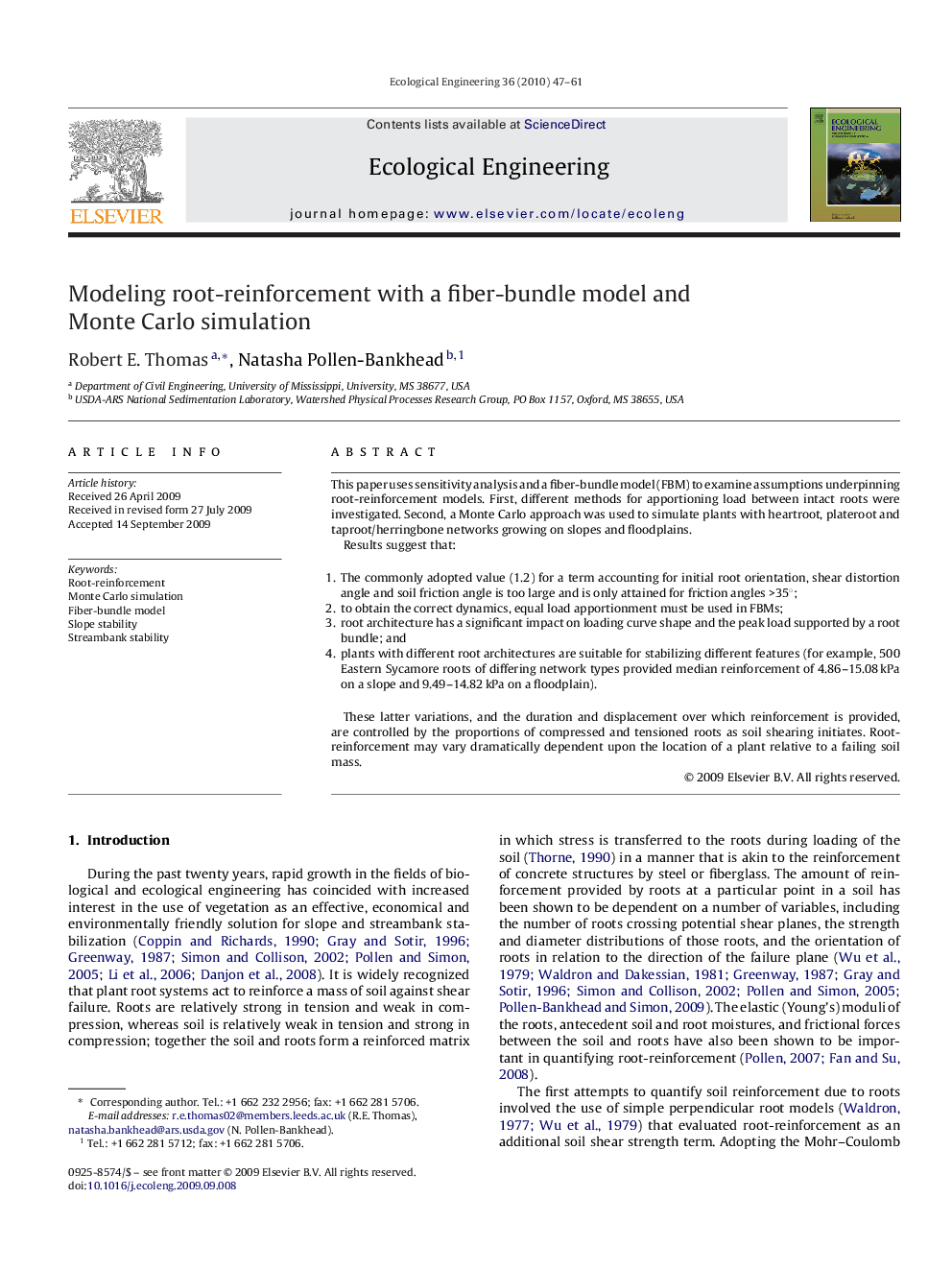| Article ID | Journal | Published Year | Pages | File Type |
|---|---|---|---|---|
| 4390819 | Ecological Engineering | 2010 | 15 Pages |
This paper uses sensitivity analysis and a fiber-bundle model (FBM) to examine assumptions underpinning root-reinforcement models. First, different methods for apportioning load between intact roots were investigated. Second, a Monte Carlo approach was used to simulate plants with heartroot, plateroot and taproot/herringbone networks growing on slopes and floodplains.Results suggest that:1.The commonly adopted value (1.2) for a term accounting for initial root orientation, shear distortion angle and soil friction angle is too large and is only attained for friction angles >35°;2.to obtain the correct dynamics, equal load apportionment must be used in FBMs;3.root architecture has a significant impact on loading curve shape and the peak load supported by a root bundle; and4.plants with different root architectures are suitable for stabilizing different features (for example, 500 Eastern Sycamore roots of differing network types provided median reinforcement of 4.86–15.08 kPa on a slope and 9.49–14.82 kPa on a floodplain).These latter variations, and the duration and displacement over which reinforcement is provided, are controlled by the proportions of compressed and tensioned roots as soil shearing initiates. Root-reinforcement may vary dramatically dependent upon the location of a plant relative to a failing soil mass.
